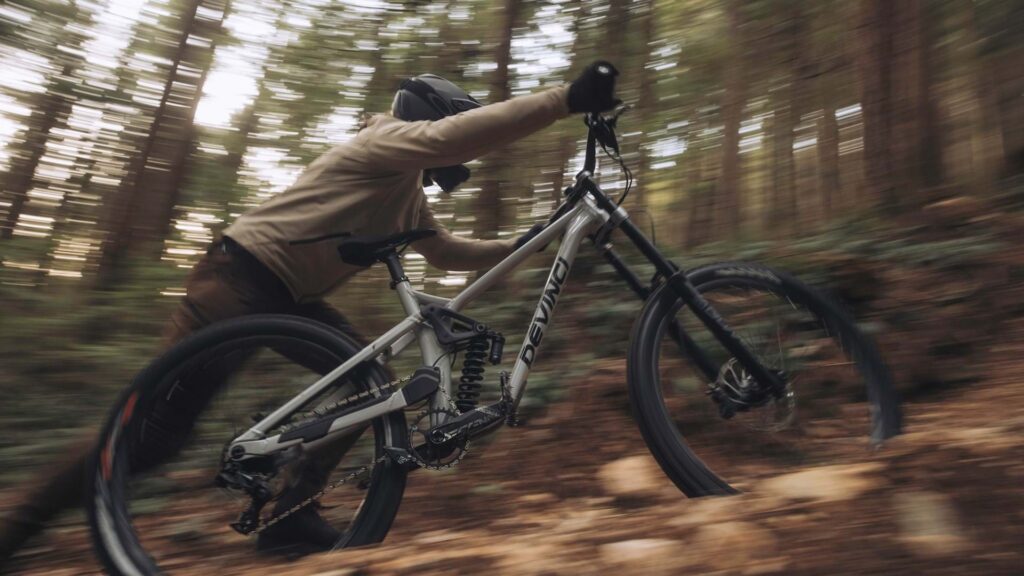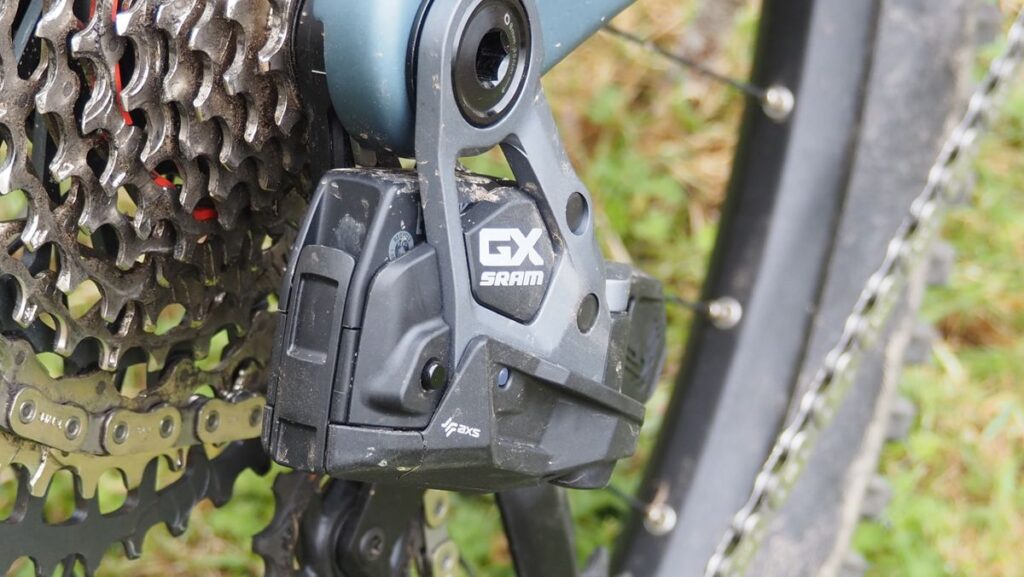Few companies have reshaped modern cycling technology as dramatically as SRAM. From single-ring drivetrains to wireless shifting, the American brand has been at the heart of nearly every major innovation in drivetrain performance over the past two decades.
Founded with a mission to make riding simpler, faster, and more intuitive, SRAM has evolved from a single-grip shifter startup into a complete systems manufacturer — producing everything from cassettes and brakes to power meters, wheels, and suspension.
In this deep dive, we’ll explore SRAM’s full story, key innovations, 2026 product lineup, real-world ride feel, and how it stacks up against its biggest rival, Shimano.
Brand Overview
Founded: 1987
Headquarters: Chicago, Illinois, USA
Founder: Scott King, Stan Day, and others
Core Focus: Drivetrain systems, brakes, wheels, suspension, and components
SRAM began with a single product: the Grip Shift, a revolutionary twist-style shifter that simplified how riders changed gears. From those humble beginnings, the company built an empire that includes RockShox, Truvativ, Zipp, and Quarq — making SRAM one of the few brands capable of offering a full ecosystem of performance components under one umbrella.
The SRAM Philosophy
While Shimano tends to focus on refinement and reliability, SRAM’s DNA is built around disruption. Every generation of products aims to simplify and reimagine cycling systems — removing clutter, cables, and mechanical complexity.
Key Design Principles
- Innovation through simplification — fewer parts, fewer cables, cleaner integration.
- System thinking — each component designed to work best as part of a complete SRAM ecosystem.
- Bold risk-taking — introducing technologies like 1x drivetrains, AXS wireless shifting, and wide-range cassettes long before they became mainstream.
The result is a brand that thrives on performance minimalism — intuitive, efficient, and distinctly modern.
Technology and Innovation
SRAM has built its reputation by breaking norms — and backing it up with engineering excellence.
1. X-Actuation & 1x Drivetrains
In 2012, SRAM changed mountain biking forever with the launch of XX1, the first true 1x (single chainring) drivetrain.
This eliminated the front derailleur entirely, simplifying shifting and improving chain retention.
- Benefits: Fewer parts, lighter setup, no chain slap, and intuitive shifting.
- Result: 1x is now the global standard in MTB and even gravel.
2. X-Dome and X-Range Gearing
SRAM’s X-Dome cassette technology uses a single piece of machined steel for maximum stiffness and minimal weight.
Their X-Range gearing, seen on road groupsets like RED and Force AXS, replaces the traditional 53/39 chainrings with compact setups (e.g., 48/35 with 10–33 cassettes) to give smoother transitions and consistent cadence.
3. AXS Wireless Technology
Introduced in 2019, AXS (pronounced “access”) defines SRAM’s modern identity.
It’s a completely wireless electronic shifting platform shared across road, MTB, and gravel.
- No cables or housing — battery-powered derailleurs communicate wirelessly.
- Customizable behavior via the AXS app (change button functions, battery monitoring, firmware updates).
- Cross-compatibility across most AXS systems (road ↔ gravel ↔ MTB).
- SRAM AXS Pod Controllers (2025 refresh): more ergonomic, tactile, and weatherproof.
4. DUB Bottom Bracket System
SRAM’s DUB (Durable Unified Bottom Bracket) simplifies the nightmare of BB standards.
A single spindle diameter (28.99mm) works across multiple shell types with compatible cups — improving bearing life and stiffness.
5. Orbit Clutch and X-Sync Chainrings
For chain management, SRAM’s Orbit Fluid Clutch and X-Sync narrow-wide chainrings deliver superior chain retention and silence on rough terrain.
6. Power Measurement: Quarq Integration
Every high-end SRAM crankset can integrate a Quarq DZero power meter, offering accuracy within ±1.5% and Bluetooth/ANT+ connectivity.
7. Integration Across Brands
SRAM owns several industry leaders:
- RockShox: Suspension forks and shocks (Pike, Lyrik, SID, Super Deluxe, etc.)
- Zipp: Wheels, handlebars, stems, and aero components.
- Truvativ: MTB cranks and cockpit parts.
- Quarq: Power meters and tire pressure monitoring (TyreWiz, ShockWiz).
This ecosystem integration gives SRAM unmatched cross-category control — the only brand besides Shimano offering full-system performance.
Product Lineup (2026)
Road and Gravel Groupsets
| Level | Name | Key Features | Target Rider |
|---|---|---|---|
| RED AXS (2026) | Flagship wireless | 12-speed, refined ergonomics, lighter brakes | Racers & pros |
| Force AXS (2026) | High-performance | 12-speed wireless, excellent value | Enthusiasts |
| Rival AXS | Affordable wireless | 12-speed, same architecture, heavier materials | Mid-level riders |
| Apex AXS (new) | Budget-friendly gravel setup | 12-speed, wide-range gearing | Gravel/Adventure |
AXS battery system: one small rechargeable unit per derailleur; lasts 20–60 hours per charge; interchangeable across front/rear.
MTB and E-MTB Drivetrains
| Level | Name | Highlights | Notes |
|---|---|---|---|
| XX Eagle Transmission | Direct-mount derailleur, zero adjustment | For UDH frames, ultimate precision | |
| X0 Eagle Transmission | Same tech, tougher alloy finish | Trail/all-mountain | |
| GX Eagle Transmission | Trickled-down performance, lower price | Most popular | |
| NX / SX Eagle | Entry-level 1×12, mechanical | Budget MTB and e-MTB OEM builds |
Brakes
- SRAM G2 / Code / Level hydraulic discs for MTB.
- eTap AXS HRD hydraulic disc for road and gravel.
- Powertrain integration on e-MTBs offers brake-sensor communication for motor cutoff.
Suspension (RockShox 2026)
- Charger 3.1 dampers, ButterCups for vibration damping, and lighter spring assemblies.
- Flight Attendant V2: electronic, automatic suspension adjustment synced via AXS network.
Wheels and Cockpit (Zipp 2026)
- Zipp 353 NSW (road): class-leading aerodynamics and tubeless performance.
- Zipp 3Zero Moto (MTB): single-wall flex design for traction and comfort.
Ride Quality and Real-World Performance
SRAM’s defining trait on the bike is its crisp, mechanical precision and progressive ergonomics.
Shifting Feel
- Mechanical: Positive, tactile, short-throw.
- AXS Wireless: Smooth and instant, customizable with click direction mapping.
- No cables = consistent performance in all weather.
Braking
SRAM’s hydraulic brakes feel progressive, with modulation over brute power — a key differentiator from Shimano’s sharper initial bite.
Ecosystem Synergy
When you run SRAM across drivetrain, brakes, and suspension (AXS + RockShox + Zipp), you get a fully connected riding experience. Each subsystem communicates and self-adjusts — especially noticeable on Flight Attendant-equipped trail bikes.
Maintenance and Reliability
SRAM’s engineering favors ease of service over proprietary lock-ins.
- AXS: tool-free pairing and easy battery swaps.
- Bleeding Edge brakes: single-port simplicity.
- DUB system: fewer BB standards, longer bearing life.
However, mechanical tolerances are tight — requiring precise setup and fresh cables (if mechanical). The Transmission (T-Type) drivetrains virtually eliminate adjustment but require a UDH-compatible frame.
Customer Experience and Ecosystem
Pros
- The AXS app is intuitive, allowing firmware updates, button remapping, and battery checks.
- Global support via SRAM Tech Centers.
- Crash replacement programs for high-end wheels and components.
- Extensive YouTube / tech resource library for DIY riders.
Cons
- Replacement parts can be pricey.
- Occasional AXS battery forgetfulness (carry a spare).
- Some riders find brake bleed slightly more finicky than Shimano.
Comparing SRAM and Shimano
| Feature | SRAM | Shimano |
|---|---|---|
| Innovation Speed | Bold, fast to market | Conservative, proven |
| Shifting | Crisp, mechanical / instant wireless | Smooth, precise mechanical |
| Brakes | Progressive, softer bite | Stronger initial bite |
| Maintenance | Easy with AXS, more complex mechanical | Simple, more mechanical |
| Drivetrain Philosophy | 1x simplicity | 2x legacy with smoother cadence |
| Compatibility | Proprietary ecosystem | Cross-compatible across levels |
Verdict:
SRAM leads in innovation and integration, while Shimano maintains the upper hand in refinement and long-term familiarity. Many riders choose SRAM for the wireless simplicity and clean cockpit, while purists stay with Shimano for its subtle precision.
Strengths
- Wireless shifting leader — intuitive and reliable AXS tech.
- 1x drivetrain pioneers — simplified gearing now industry standard.
- Massive ecosystem — drivetrain, brakes, power meters, wheels, suspension.
- Great ergonomics — lighter touch, customizable shifter logic.
- Cross-compatibility — mix-and-match AXS MTB and gravel setups.
Weaknesses
- Premium pricing at mid/high-end tiers.
- AXS batteries require occasional charging attention.
- Proprietary ecosystem can complicate third-party mix setups.
- Brake feel preference varies among riders.
Best For
- Riders who value innovation, integration, and clean aesthetics.
- Gravel and MTB riders who want simple, reliable wireless shifting.
- Performance enthusiasts who maintain their bikes and like cutting-edge tech.
- E-bike owners seeking transmission-level durability and smooth shifting under load.
Verdict
SRAM has evolved from an ambitious underdog into the defining performance brand of modern cycling. Its AXS wireless platform, 1x gearing, and Transmission system represent some of the most important drivetrain innovations in cycling history.
The brand’s strength lies in its clarity of vision: simplify the ride, eliminate friction, and empower riders with technology that feels natural, not complicated.
If you value crisp shifts, low maintenance, and sleek design — SRAM delivers an ecosystem that feels futuristic yet intuitive.
Final Take
SRAM in 2026 is innovation made tangible.
From high-end wireless road setups to bombproof Eagle Transmission MTB systems, SRAM’s ecosystem now spans everything a serious rider could need.
Yes, it’s premium-priced. But what you get is a bike that’s cleaner, smarter, and smoother to live with.
SRAM (2026): Ride Simpler. Shift Smarter. Go Farther.
FAQs
Is SRAM better than Shimano?
Not universally — SRAM leads in wireless innovation, Shimano in refinement and smoothness.
How long do AXS batteries last?
Typically 20–60 riding hours depending on usage and temperature.
Can I mix road and MTB AXS parts?
In most cases, yes — AXS uses the same communication protocol.
Do I need special tools for SRAM AXS?
No special tools. Pairing is done wirelessly; standard torque tools apply.
Is SRAM reliable for e-bikes?
Absolutely — especially the new Transmission series, which shifts cleanly under motor torque.
Related Content:
- How To Adjust Your Gears
- Best Chain Wear Tools
- Shimano Brand Review
- SRAM vs Shimano
- Best Bike Chain Lube
Why Trust This Review?
BestBikeBrands is built by lifelong cyclists with decades of real-world experience — in the shop, on the trail, and behind the wrench. Our goal is simple: to help riders choose the best bikes and gear with confidence, backed by expert insights and hands-on testing. Learn more about us →






